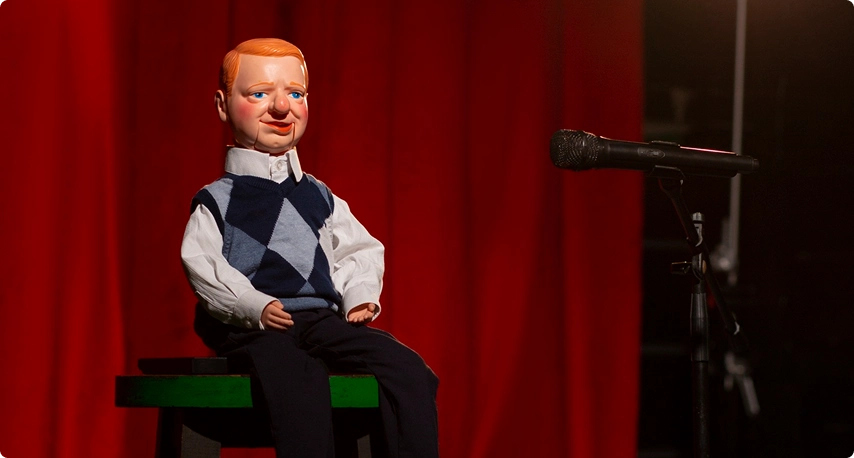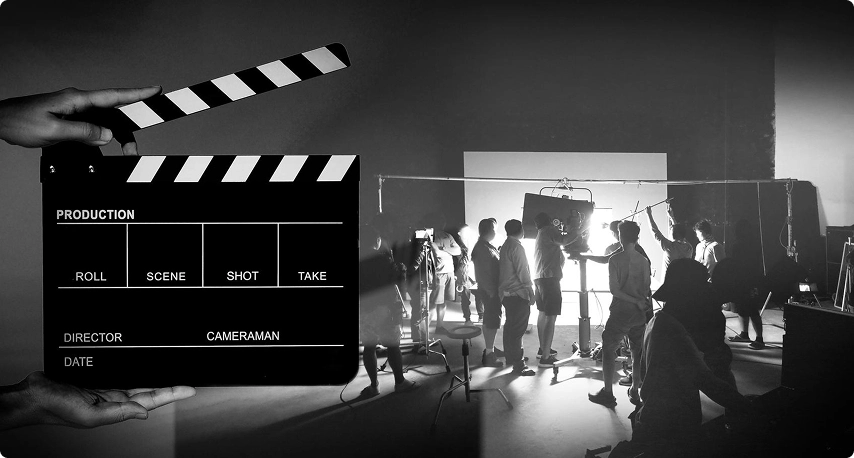Foundations of Film: Genre, Style, and Suspense
Week 3: Identifying Genre
This week focuses on the foundational elements of visual storytelling, particularly how early silent films and German Expressionism laid the groundwork for modern cinematic techniques. The discussion will emphasize how filmmakers used composition, lighting, and performance to convey emotions and narrative without sound. By the end of the week, students should be able to recognize the influence of these early techniques on contemporary films and analyze how genre conventions evolve over time.
Day 04: Tuesday, 7/31 – Silent Comedy & German Expressionism
Topics Covered:
- The origins of visual storytelling in silent cinema.
- The impact of Buster Keaton’s physical comedy on modern directors.
- The stylistic influence of German Expressionism on contemporary films and its psychological effects on audiences.
Pre-Class Assignments:
To prepare for the discussion, students should watch the following:
- Crash Course: Silent Film – An overview of how early films relied on visuals to tell stories.
- “Every Frame a Painting” – An Analysis of Keaton – A detailed look at Keaton’s mastery of framing, timing, and physical comedy.
Discussion Questions:
- How do silent films use framing, movement, and composition to tell a story without dialogue?
- How do silent films use framing, movement, and composition to tell a story without dialogue?
- Keaton was known for performing dangerous stunts himself. How does this dedication to realism affect audience engagement?
- Why has Buster Keaton’s legacy faded in comparison to Charlie Chaplin? How did their approaches to silent comedy differ?
In-Class Activities:
- Screening: Keaton’s Sherlock, Jr.
- Analysis:
- Identify specific sequences where Keaton uses framing and camera movement to enhance humor.
- Discuss how Keaton’s physical comedy differs from modern comedy styles.
- Screening: Crash Course on German Expressionism
- Discussion:
- How did German Expressionism’s exaggerated set design and lighting influence later genres, such as horror and film noir?
- Identify examples of German Expressionist influences in modern films (Examples: Tim Burton’s work, The Cabinet of Dr. Caligari, Mad Max: Fury Road, Logan).
- Screening: Tim Burton – A German Expressionist Influence
- Discussion:
- How does Tim Burton adapt German Expressionist techniques to create stylized fantasy worlds?
- Are there examples of German Expressionist influences in films set in realistic or futuristic settings?

Day 05: Thursday, 8/2 – Film Noir: Antiheroes & Femme Fatales
Topics Covered:
- The emergence of Film Noir as a response to World War II and the rise of moral ambiguity in American cinema.
- The role of the Femme Fatale and its cultural significance in the 1940s.
- The evolution of the antihero and its influence on contemporary storytelling.
Pre-Class Assignments:
Students should research the following topics before class:
- The impact of WWII on American culture and film.
- Examples of Femme Fatales in mythology and modern cinema (Gone Girl, Kill Bill, Basic Instinct).
- The characteristics of antiheroes and their presence in contemporary media (Breaking Bad, The Dark Knight, No Country for Old Men).
Discussion Questions:
- How does Film Noir reflect the anxieties and cynicism of post-war America?
- Why was the Femme Fatale a controversial and compelling figure in the 1940s?
- How do modern antiheroes differ from their Film Noir counterparts?
In-Class Activities:
- Screening: Double Indemnity (1944)
- Analysis:
- Identify Film Noir elements such as low-key lighting, voice-over narration, and fatalistic themes.
- Examine the role of gender and power dynamics between Walter Neff and Phyllis Dietrichson.
- Discuss the true central relationship in the film—Walter & Phyllis or Walter & Keyes?
Week 4: Suspense and Terror
This week explores the techniques used by filmmakers to build suspense and evoke fear. The discussion will focus on how directors manipulate cinematography, editing, and sound to create tension, as well as how these methods have evolved over time. Students will compare Alfred Hitchcock’s psychological suspense techniques with the modern existential terror presented in No Country for Old Men.
Day 06: Tuesday, 8/7 – Alfred Hitchcock: The Master of Suspense
Topics Covered:
- Hitchcock’s signature use of cinematography, editing, and mise-en-scène to generate suspense.
- The role of voyeurism in storytelling and its impact on audience perception.
- The psychological effects of tension-building techniques in film.
Pre-Class Assignments:
- Watch: Hitchcock Documentary – A deep dive into Hitchcock’s career and storytelling techniques.
Discussion Questions:
- How does Hitchcock manipulate audience perception through framing and camera movement?
- What are the key elements of Hitchcock’s suspense formula?
- How does Rear Window explore themes of surveillance, isolation, and morality?
In-Class Activities:
- Screening: Rear Window (1954)
- Analysis:
- Discuss how Hitchcock limits the audience’s perspective to create suspense.
- Examine how sound design plays a role in increasing tension.
- Compare Rear Window to modern films that use voyeurism as a central theme (Examples: Disturbia, The Girl on the Train).

Day 07: Thursday, 8/9 – Post-9/11 Terror: Unstoppable Forces in Film
Topics Covered:
- The evolution of cinematic villains from traditional antagonists to existential threats.
- The shift in American cinema post-9/11 and its impact on storytelling.
- The Coen Brothers’ modern take on suspense, morality, and inevitability.
In-Class Activities:
- Screening: No Country for Old Men (2007)
- Analysis:
- How do the Coen Brothers build suspense differently from Hitchcock?
- What makes Anton Chigurh an effective and terrifying modern antagonist?
- How does the film reflect post-9/11 themes of uncertainty, fate, and moral ambiguity?
Discussion Questions:
- How does the film subvert traditional hero-versus-villain storytelling?
- In what ways does No Country for Old Men mirror themes found in Hitchcock’s films?
- How does the lack of a traditional soundtrack affect the film’s tension?
Expectations & Deliverables:
- Daily Reflections: After each class, students should submit a 1–2 paragraph reflection via email, analyzing the day’s discussion and screenings.
- Active Participation: Students are expected to contribute to discussions, provide examples from contemporary films, and make connections between different genres.
- Instructor Contact: Students should reach out with any questions or clarifications.